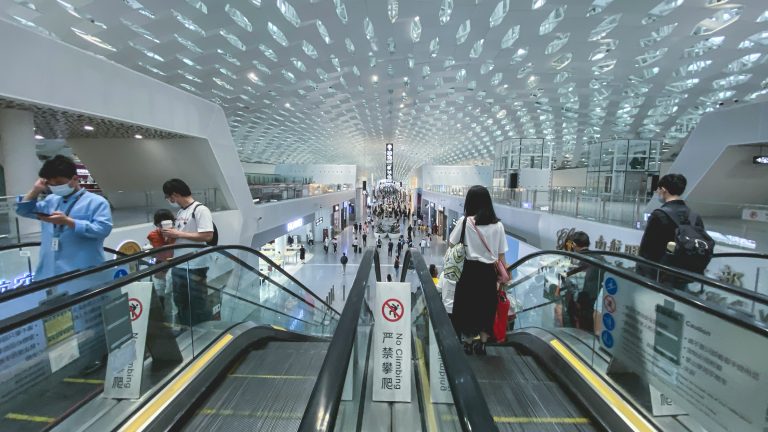Editor’s note: What is the church? How can a church be governed by the Bible? These are questions that Christians have struggled with for more than two millennia, and as the Chinese church continues to mature, Chinese believers are also facing these difficult and important questions. In the final part of this series, Pastor Wu Jing continues to lay out some of the practical things his church did as they institutionalized — for instance, they planted another church — and some of the deeper theological reasons behind these concrete steps.
This article was originally published on the Grace to City website in March, and has been edited for length and clarity.
Before 2010, Chinese house churches as a group did not face the issue of institutionalization, because they had not yet grown to a stage where they could think about these problems.
The rise of Chinese house churches happened largely through the lay movement. After 1949, missionaries left and denominations were broken. The ecumenical lineage was smashed, and most churches were planted by lay evangelists. Around the 1990s, missionaries came again to China. Most focused on evangelism and missions, not church building.
Lay leaders who planted churches did not have much experience with biblical church governance, and lacked experience living in a biblically-built church. They needed more than intellectual understanding; they needed practical experience. The church, as revealed in Scripture, is Christ’s body. It is a living organism. You can describe the body with words, but only by dwelling in a living church body can you understand why the church is alive. In the past, we in China have known the church on a rational level by reading church history and spiritual books – but most of us have not experienced a healthy, vital church.
Before 2010, Chinese house churches as a group did not face the issue of institutionalization, because they had not yet grown to a stage where they could think about these problems.
The doctrine of church has lacked theological development. In the last decade or two, Reformed theology has made an impact in China. Before that, the Chinese church was more influenced by fundamentalism and piety. There was a strong emphasis on salvation, and a weak understanding of church doctrine. We were young in theology and spiritual life, and lacked biblically-based theological reflection in many aspects of church governance.
Building the Body of Christ
Ekklesia, the Greek word for church, means “the assembly of the saints.” The church is a spiritual fellowship of born-again Christians, established by God through his Word. Church members gather regularly to worship God together, to edify one another, to build up Christ’s body, and to carry out the Great Commission. God wants to manifest his glory through the church.
- Church Planting Is Necessary to Build Up Christ’s Body
When our church began to plant a new church, about 30 members went out from us. Before this, our church had already begun to institutionalize. After we planted, the process deepened. Currently, our church has a confession of faith, a membership covenant, and a church constitution. We have selected deacons and elders, but have not yet ordained elders.
We planted a church for many reasons. The first was because it was a practical need. We used to have two services, but because of the pandemic, the original church space could no longer be used. We could not find a space large enough to combine the two services, so we needed to split into two. This practical need sped up our original planting plan.
Church planting was based on our vision. Some church members already lived in the area where the church was planted, and there was a great need for a church there.
Second, we planted a church because of our doctrine of church. Multiple congregations under one church conflict with our biblical understanding of the church. In Greek, ekklesia refers to one group of people gathered in the same place at the same time. We come together, express our confession of faith, practice the covenant of church membership, and testify to Christ. It is healthier to divide the two congregations into two churches through church planting.
Never miss a story
Third, church planting was based on our vision. Some church members already lived in the area where the church was planted, and there was a great need for a church there. Because of that, we decided to build a new church there.
- A Biblically-Based Deepening Stage
After we planted another church, the institutionalization process entered a deepening stage. We began to use our confession of faith for concrete church governance and pastoral care. A church should be centered on and built according to the Bible.
First, the church is set apart by God and belongs to his people. Through membership, we affirm that each member must have a clear understanding of the gospel, and can respond to it with repentance and faith. We conduct interviews with new members who apply to join, but also with existing church members, to avoid hasty endorsements that might cause these individuals to neglect their own experience of being born again.
Second, the church is Christ’s body and a witness to God’s glory. Jesus said, “By this all people will know that you are my disciples, if you have love for one another.” The church itself is God’s method of evangelizing. We should build up a unified body of Christ through the membership covenant. In covenantal relationships, we rebuke, encourage, and exhort one another, both in the life of the church and in our personal lives. We are to live out God’s Word and love one another deeply, so God’s name may be glorified.
Third, we worship God according to biblical teachings. In worship, we recite God’s Word, preach God’s Word, pray God’s Word, sing God’s Word, and witness God’s Word through the sacraments. In all this, we teach our members to worship according to biblical principles, so they will genuinely come before Christ and worship in spirit and in truth.
In worship, we recite God’s Word, preach God’s Word, pray God’s Word, sing God’s Word, and witness God’s Word through the sacraments. In all this, we teach our members to worship according to biblical principles, so they will genuinely come before Christ and worship in spirit and in truth.
Fourth, the church’s mission is to make disciples of all nations. Jesus sent out his church, saying, “All authority in heaven and on earth has been given to me. Go therefore and make disciples of all nations, baptizing them in the name of the Father and of the Son and of the Holy Spirit, teaching them to observe all that I have commanded you. And behold, I am with you always, to the end of the age.” Through discipleship, we practice the Great Commission. We encourage one-to-one discipleship relationships among members, helping them live by God’s Word and encourage one another to follow Jesus and make disciples.
Fifth, we care for the nations through planting churches, missions, and preparing for church planting in places where there is no worship. As we elect elders and deacons, we discover the workers God has raised among us. Through ministry, the church trains and prepares fit workers who can build churches through missions and church planting.
In this stage of deepening, we must constantly reflect on our confession of faith, so we may plant churches according to biblical teaching.
Called, Gathered, Built Up
We thank God for his grace, as he led us from being a student fellowship to our present form. Over the last ten-plus years, he called and gathered us in the gospel and built us up in his Word. We plead with God: help us persevere in and bear witness to your grace to the end.
Come quickly, Lord!
Wu Jing is a pseudonym for a post-80s generation pastor. Wu began to pastor after he graduated from seminary in 2014.
Pray for Chinese house churches as their ecclesiology deepens and they face practical concerns of establishing healthy, vibrant church bodies.































